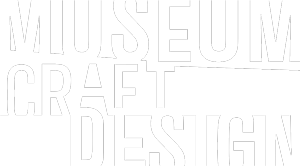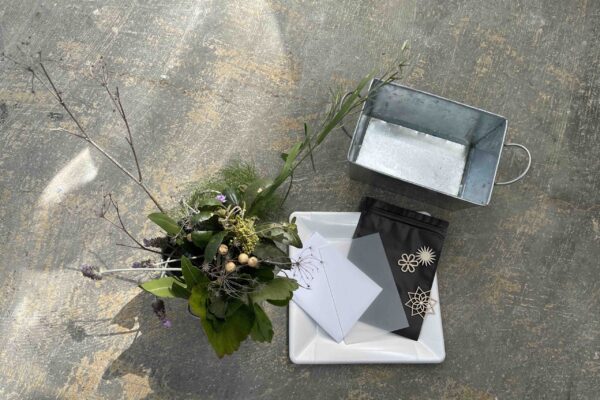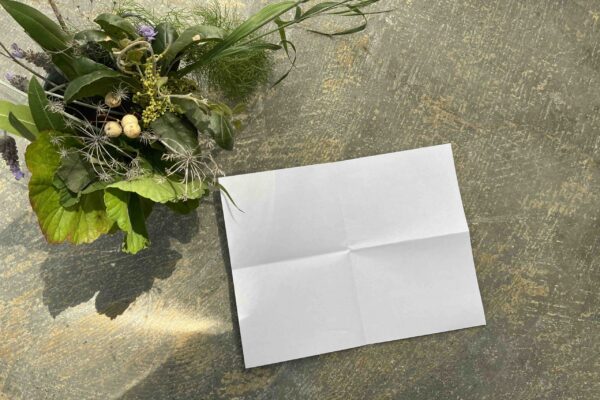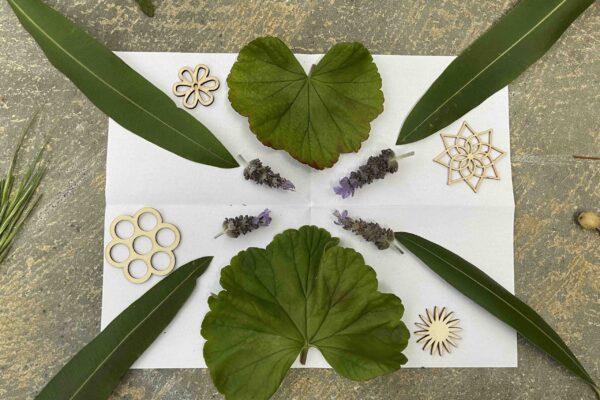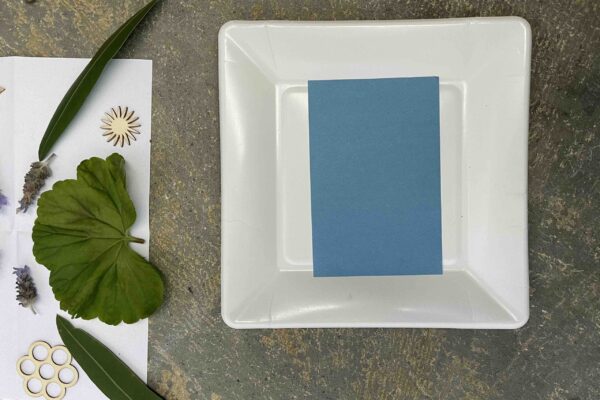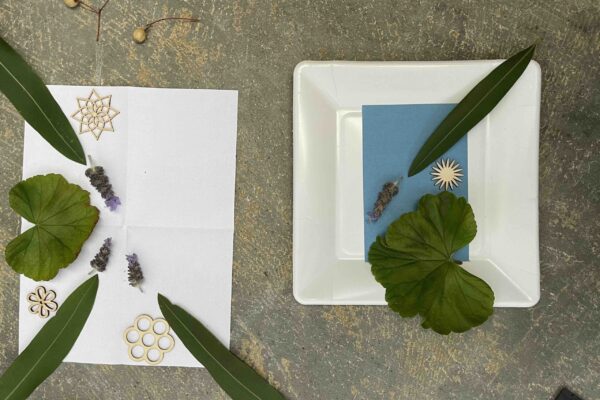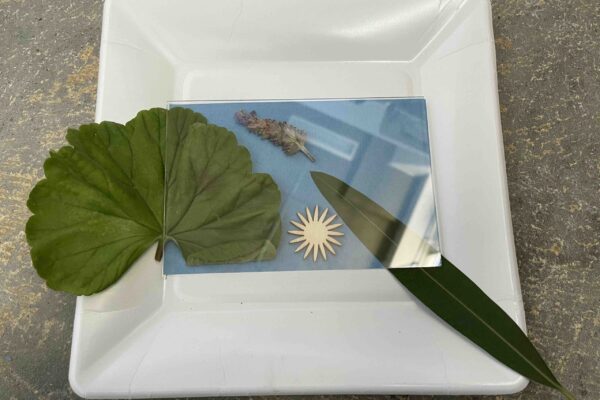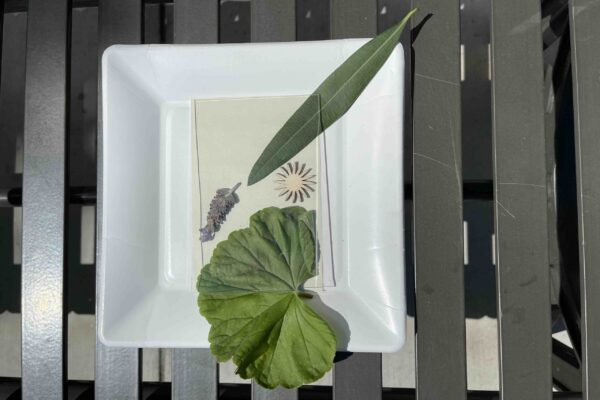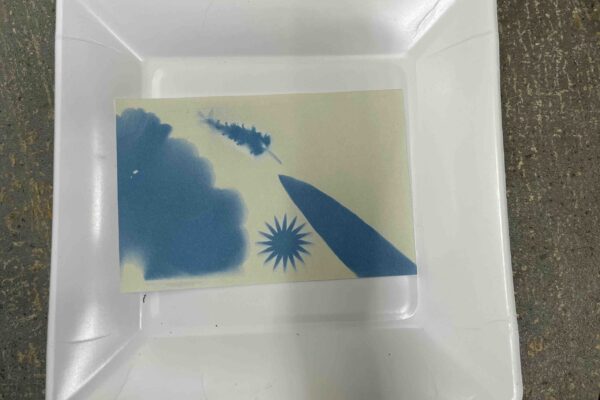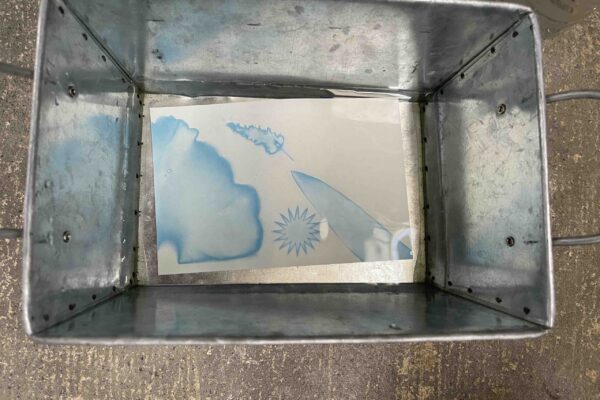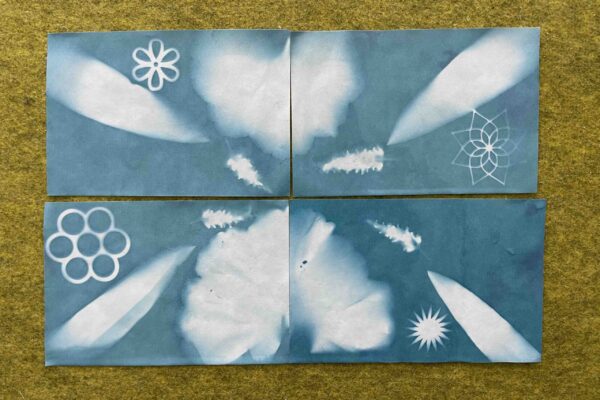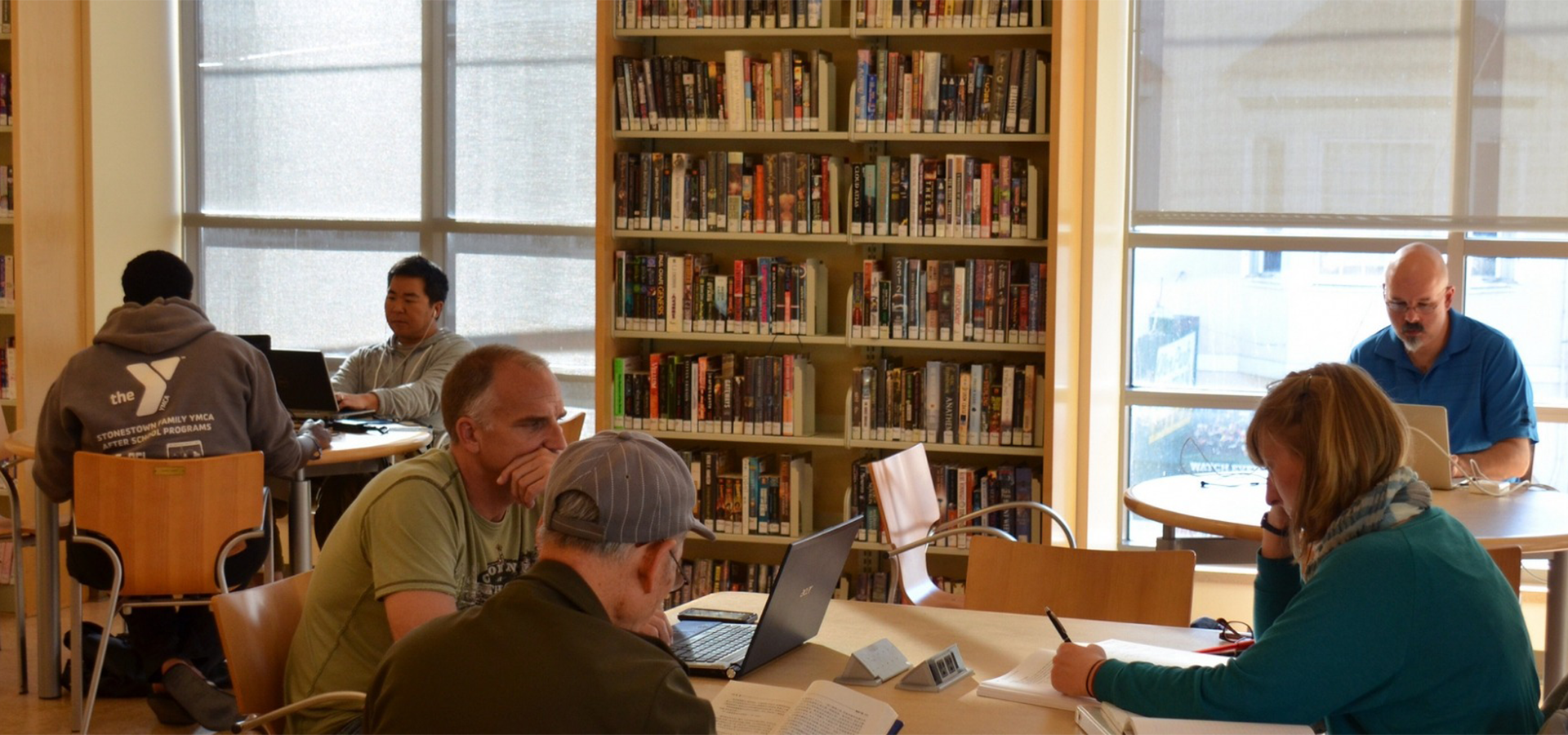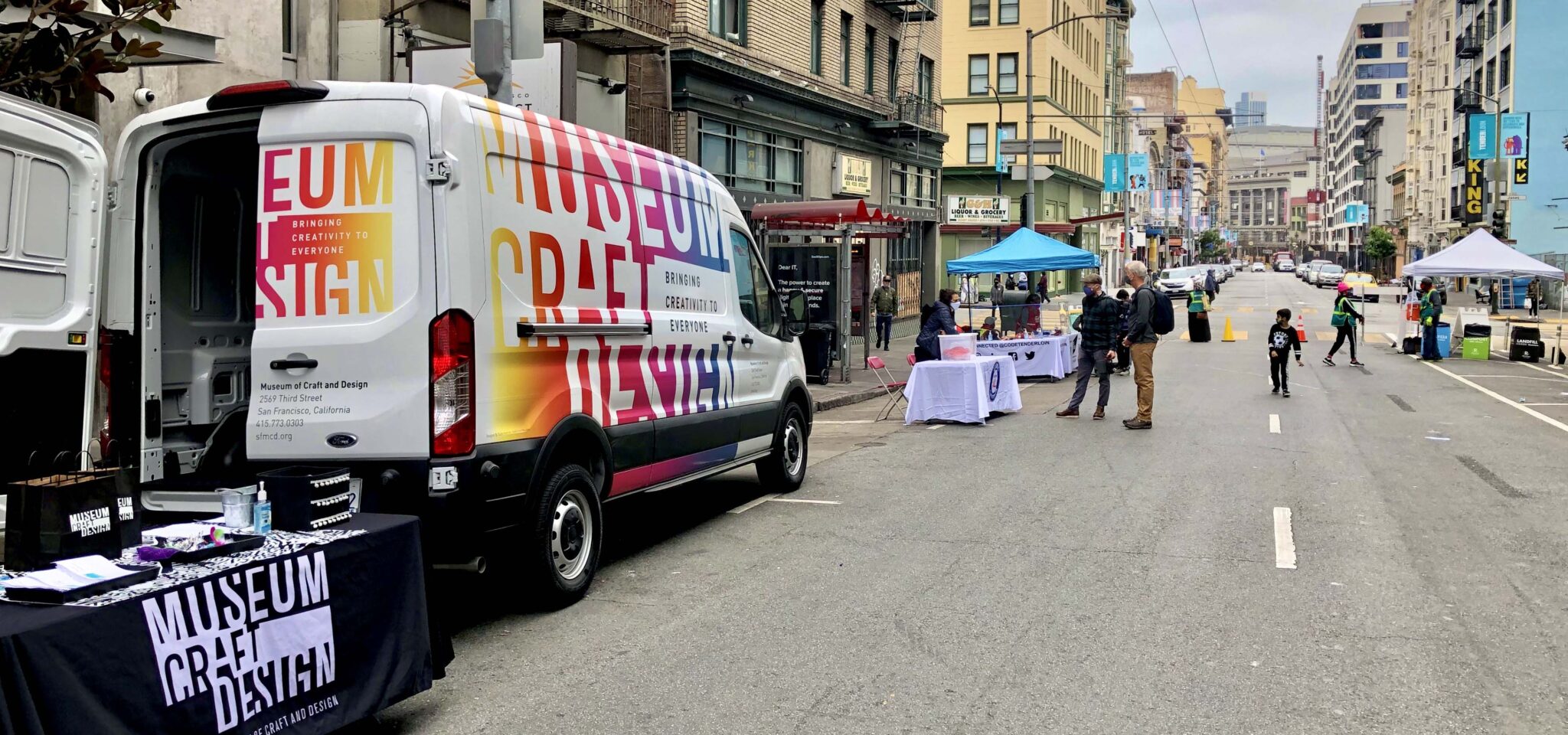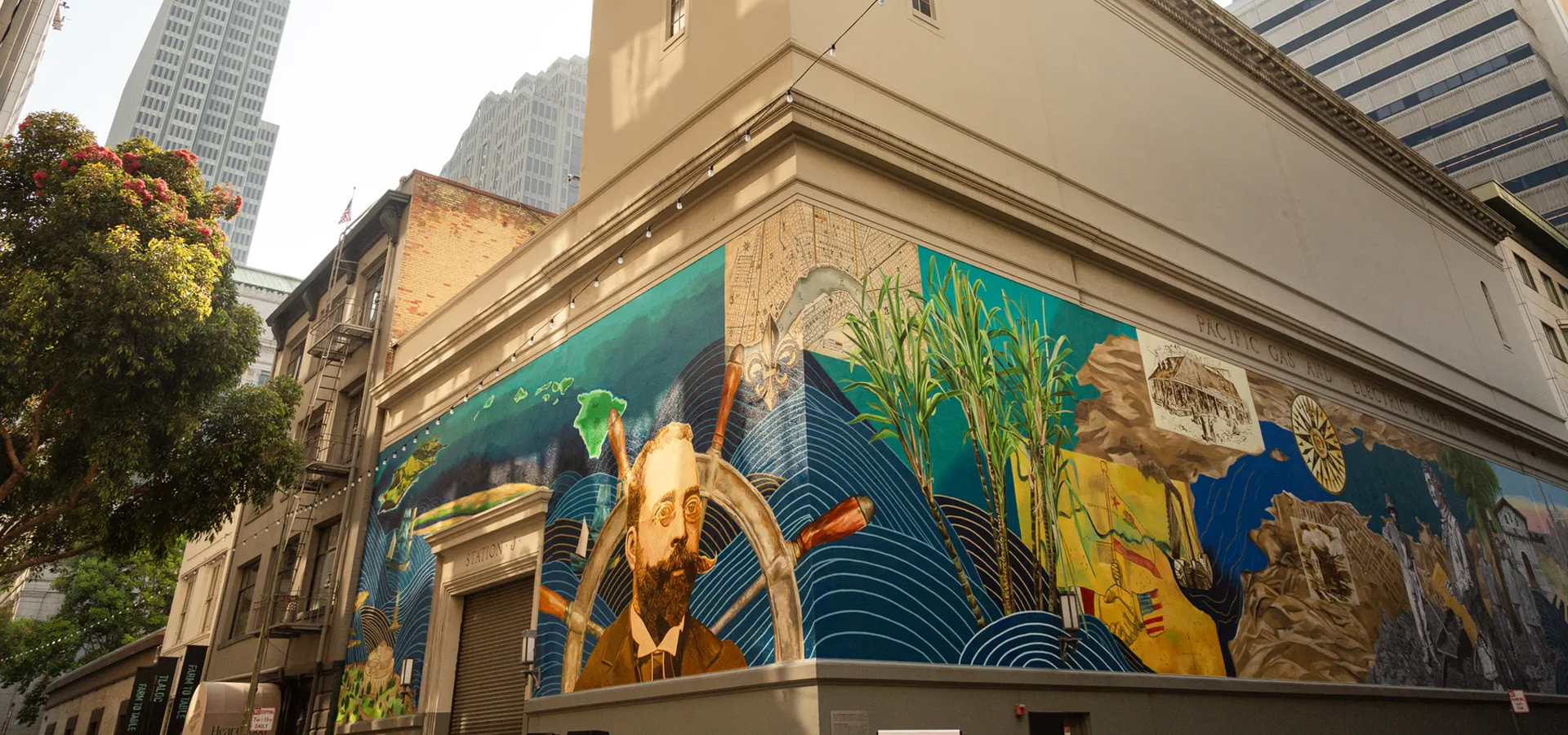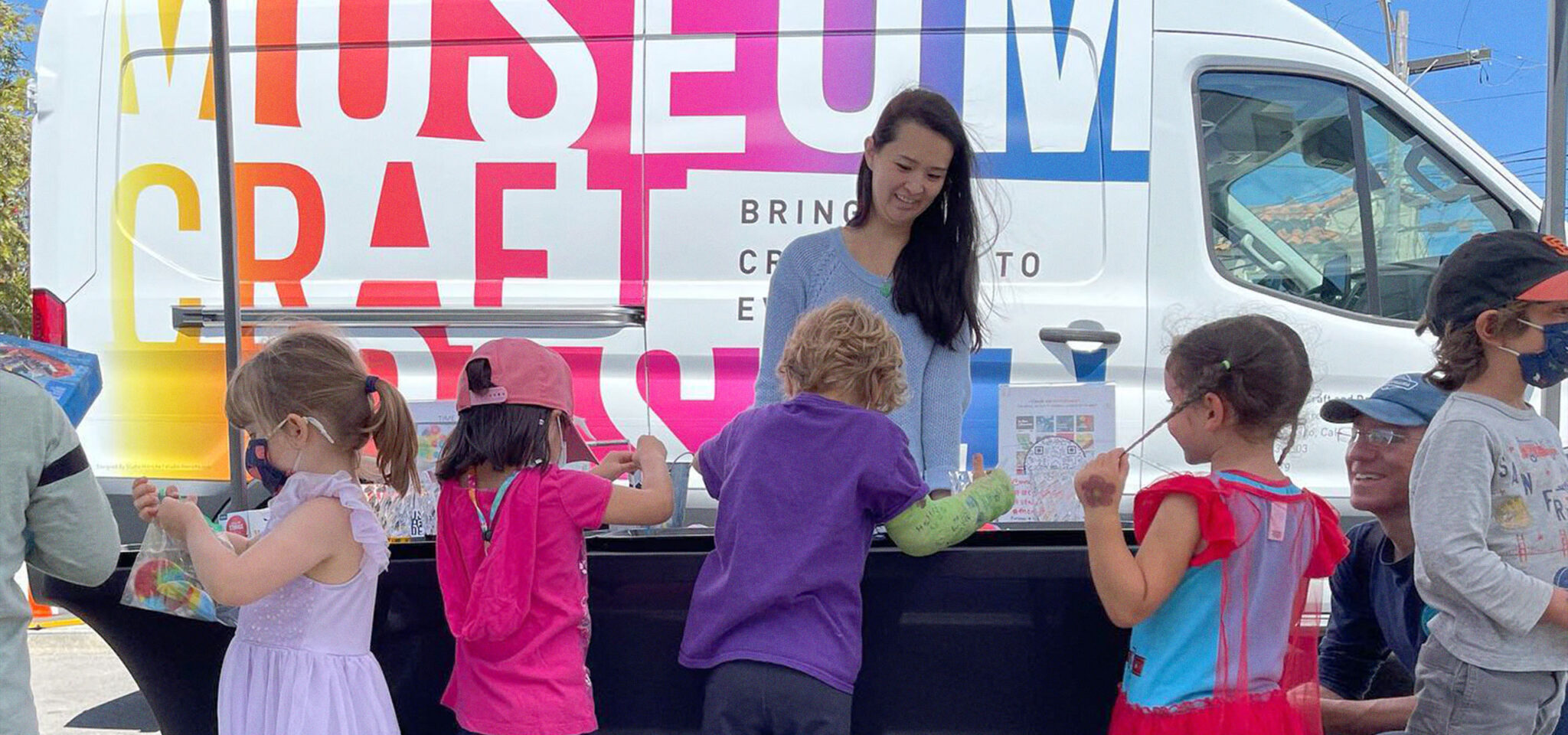Blue Where
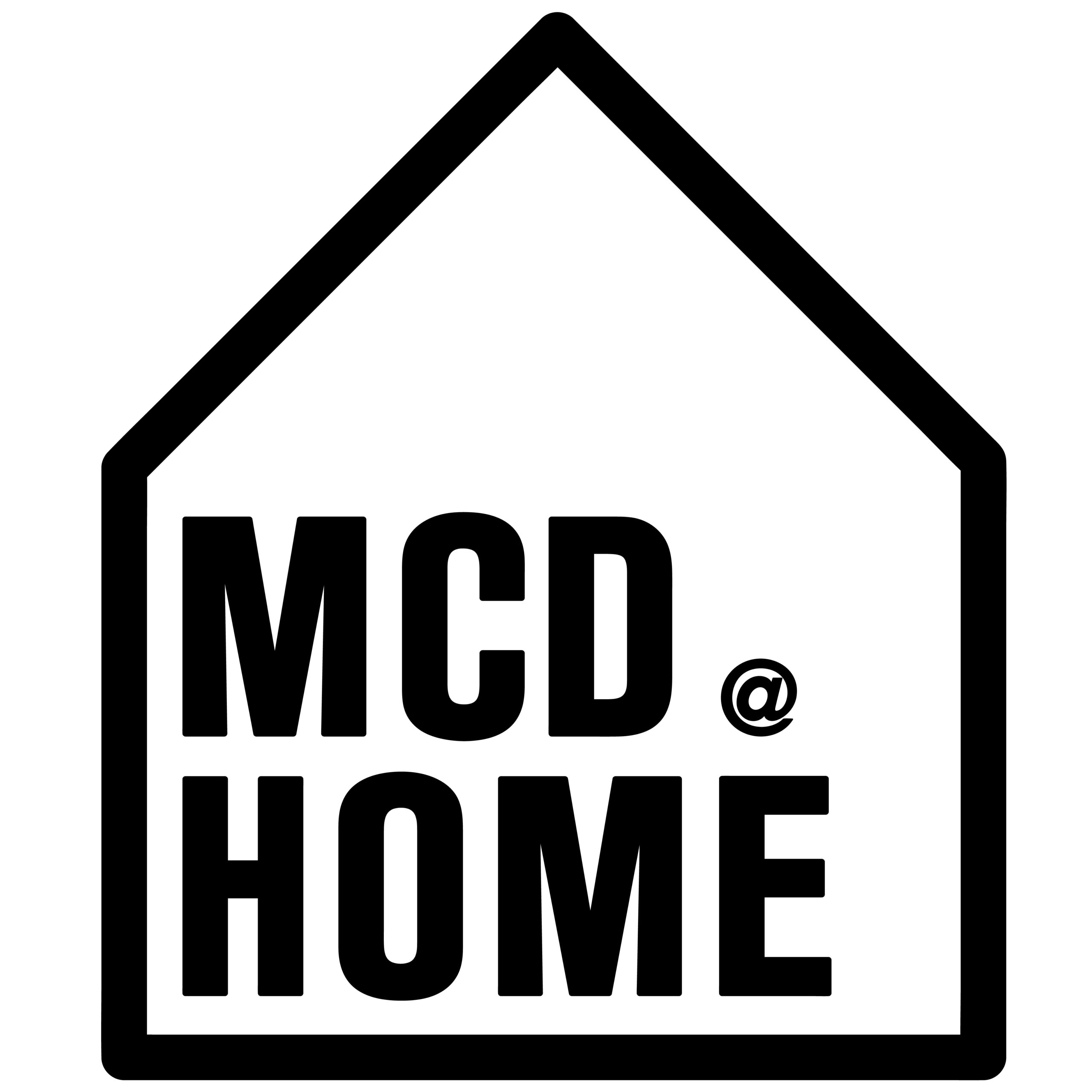
Sponsored by
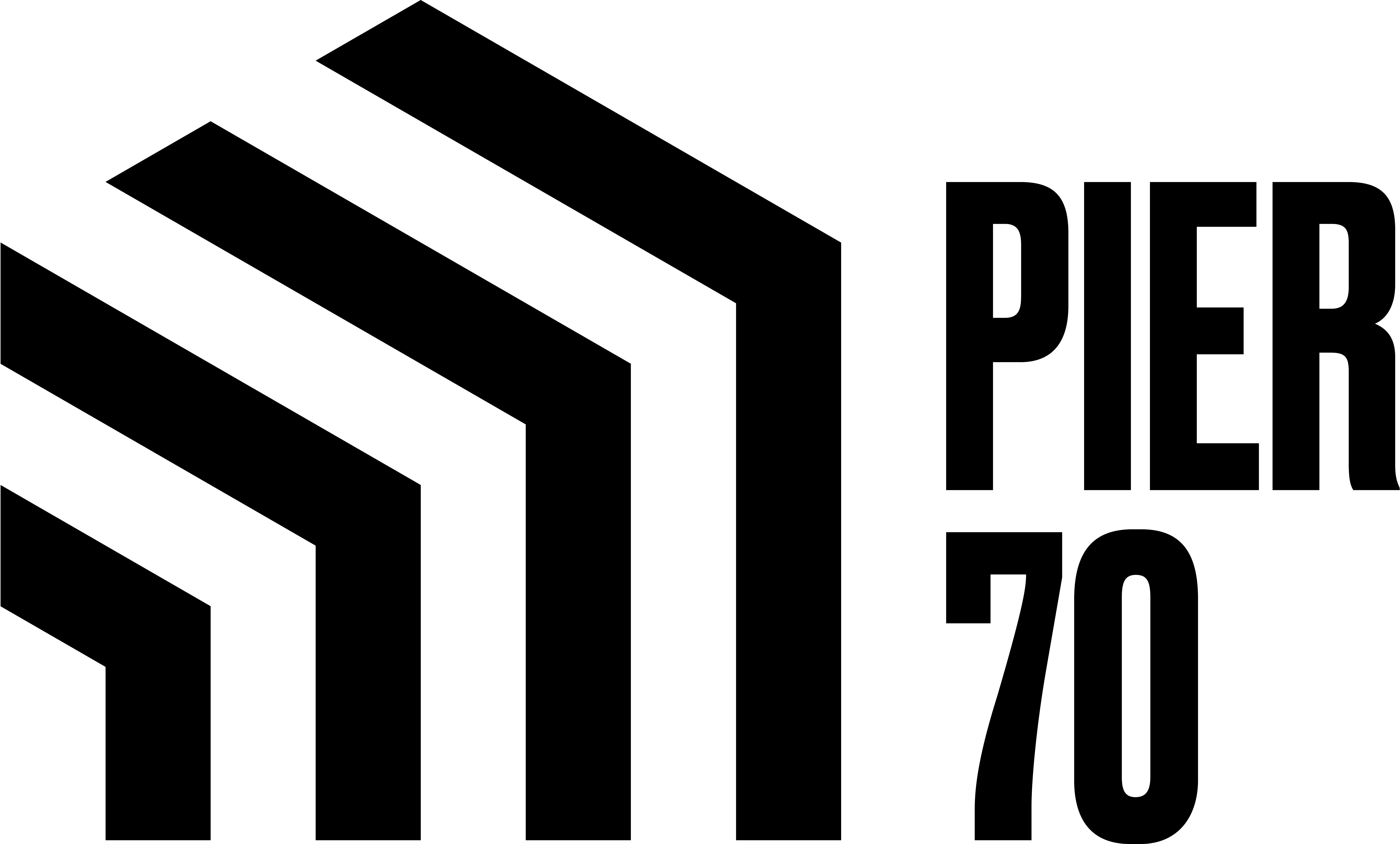

RECOMMENDED AGE LEVEL
Recommended for ages 7 and up with adult supervision
PROJECT DESCRIPTION
Glithero’s Blueware Tiles (2011) are created using a process called cyanotype. Dating back to the 1840s, cyanotype remained popular until the late 20th century when it was used in blueprints. Founders Sarah van Gameren and Tim Simpson describe the process:
“Using age-old preserving techniques, humble weeds of inner London borough pavements are pressed, dried, and then composed between plates of glass that function like photographic negatives. Working with light sensitive chemicals, the plates and tiles are then exposed under ultraviolet light, which develops a photogram of the specimens in intense Prussian blue.”
With this kit, you will use premade sunprint paper and weeds found near your home to experiment with the cyanotype process, documenting place, and creative pattern design. Time, which generates the weeds, is a key element of any photographic process, whether it be cyanotype or film photography and illustrates time as creator for these works and MCD@Home project!
MATERIALS
4 pieces of 4”x6” cyanotype paper (in black bag)
1 piece of standard printer paper, folded
9”x9” paper plate
4”x6” piece of plexi-glass
Laser cut wood cutouts
Found weeds and natural ephemera
Sun
Time
Bowl or tray of water large enough to submerge paper pieces
INSTRUCTIONS
- Begin the project inside your home, away from any windows that have natural light coming in.
- Unfold printer paper and lay flat.
- This will be your template for the final product, with each quadrant representing one of the pieces of cyanotype paper.
- Use found weeds, ephemera, and optional objects to create a patterned layout on top of the printer paper.
TIP: Collect materials that lay fairly flat so there is little chance of them shifting during the process.
OPTIONAL: Use MCD’s process for Quick Pressed Flowers to add an extra layer of Glithero’s process to your project.
- Questions to consider during your process:
- How can you arrange the objects so they create a cohesive pattern across all 4 paper quadrants?
- How can you utilize the folds of the paper to mimic a “mirrored” layout?
- Look to Glithero’s Blueware Tiles and Botanical Tiles for inspiration.
- Place square paper plate on a flat working surface.
- Remove one of the cyanotype papers from its black bag and place blue side up on the plate. Seal bag again.
- Choosing one of the template quarters, transfer the ephemera and objects onto the cyanotype paper, keeping the same configuration.
TIP: Work fairly quickly to avoid too much unintended UV exposure • Remove the protective film and place plexi-glass sheet atop the objects. This will insure they do not blow away or shift.
NOTE: Be careful of potentially sharp corners on the plexiglass.
- Carefully walk the plate outside and place in a bright, sunny spot.
NOTE: It’s OK if it’s overcast outside! There will still be UV exposure. Your development might take just a little longer.
- Depending on how sunny the day is, leave the plate out anywhere from 10-30 minutes (shorter time for lots of sun, longer time for little sun). You will notice that the blue paper will turn a pale yellow.
- Bring the plate inside, remove the plexi-glass and ephemera, and submerge the cyanotype paper in cool (but not cold) water.
- Agitate the water a bit by lightly shaking the bowl, making sure the whole print is always submerged. See how the colors invert and the image is getting more blue!
- Remove print after one minute and set in a safe place to dry.
- Repeat the process with each cyanotype paper.
- Once all pieces are dry, consider mounting them on cardstock or cardboard.
- Will you display them all together, like Glithero? Or will each piece be independent?
- Explore cyanotype printing on a variety of different materials, like wood, fabric, canvas and more! Discover a wide variety of materials at Bay Area company Jacquard Products.
- Dig deeper into pattern making with a look at the history of damask, as well as a course in how to design your own timeless pattern!
RELATED RESOURCES
See more from Glithero, including all things botanical tiles.
Sneak a peek into SF artist Sean MacFarland’s cyanotype studio.
Local artist Meghann Riepenhoff’s cyanotype work makes waves by incorporating the ocean and ice directly into the creative process. She does not fix her prints, meaning they will continue to change over the course of their existence.

